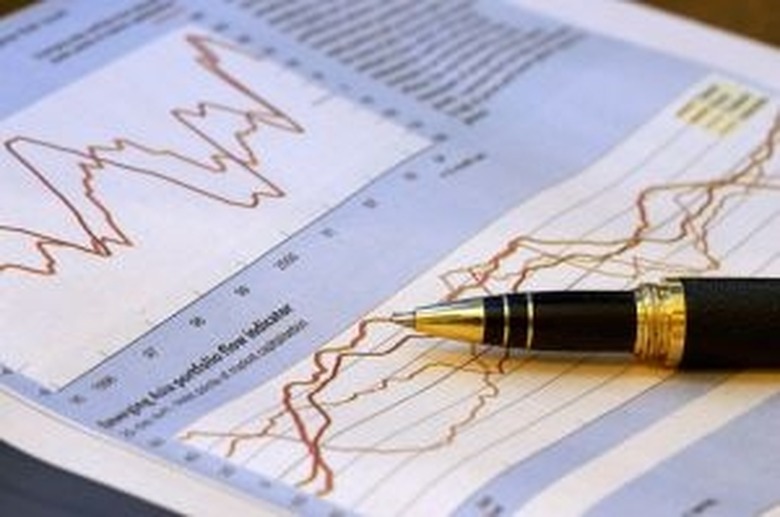How To Calculate Price Per Share Of Common Stock
The price per share of common stock can be calculated using several methods. Stock analysts use several methods to calculate price per share of many stocks using similar techniques for companies in the same industry.
Step 1
Find stock quotes in the newspaper or online (see Resources). Always use the close price if it is after exchange hours or the last quote when trading during the day.
Step 2
Consult a periodical, such as the "Value Line Investment Survey," to locate the book value. Compare book value, the historical P/E and the 3-to-5-year price projection. This shows the expected range in which the stock should trade, which will indicate whether the stock is trading above or below its long-term price.
Step 3
Multiply the stock price by the number of shares outstanding. This is the capitalization of the company. Ignore stock options to employees and divide the stock price by the earnings per share. This is the multiple of the stock or a representation of the expected future earnings of the company. Estimate next year's earnings and multiply by the multiple to get next year's price estimate. Use this calculation for financial companies.
Step 4
Multiply a company's earnings by its historical multiple (multiple is calculated by 100 multiplied by the expected next year earnings growth increase). A stock earning $1 this year and expected to earn $1.30 next year has a 30 percent growth rate and a multiple of 30. If the stock is at $20 this year, the stock should be at $39 next year, a gain of almost 100 percent.
Step 5
For capital-intensive stocks, subtract all liabilities from the assets. The remainder is called book value. Divide book value by the number of shares to get book value per share. This represents the intrinsic value of the company as a going concern. Stocks that use large amounts of capital, such as car and steel companies, often trade as a percent of book value.
TL;DR (Too Long; Didn't Read)
There are many ways to calculate price per share estimates. These ranges are useful for deciding whether a particular is cheap or expensive. Compare against other analyst's recommendations and judge against last-trade statistics.
Warning
Always compare your calculations with at least two other reputable sources.
Cite This Article
MLA
Montalbano, Carmelo. "How To Calculate Price Per Share Of Common Stock" sciencing.com, https://www.sciencing.com/calculate-per-share-common-stock-4928002/. 24 April 2017.
APA
Montalbano, Carmelo. (2017, April 24). How To Calculate Price Per Share Of Common Stock. sciencing.com. Retrieved from https://www.sciencing.com/calculate-per-share-common-stock-4928002/
Chicago
Montalbano, Carmelo. How To Calculate Price Per Share Of Common Stock last modified March 24, 2022. https://www.sciencing.com/calculate-per-share-common-stock-4928002/
